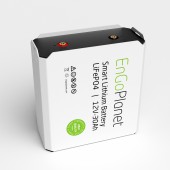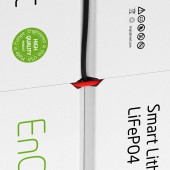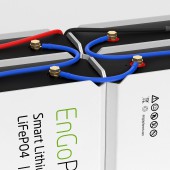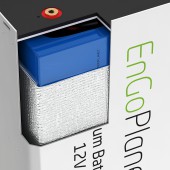Engo Smart Battery Enclosure by Vladimir Zagorac |
Home > Winners > #148633 |
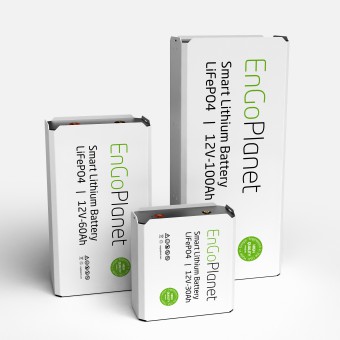 |
|
||||
| DESIGN DETAILS | |||||
| DESIGN NAME: Engo PRIMARY FUNCTION: Smart Battery Enclosure INSPIRATION: The project started with the idea to produce battery casings for a range of EnGo Planet's solar products. After analysis of a typical installation process and everyday usage scenarios, inspiration was found in pure functionality and minimal aesthetic expression. Easy stacking, optimal space usage, and intelligent cable management were the main focus of the design. UNIQUE PROPERTIES / PROJECT DESCRIPTION: The straightforward geometric form of the enclosure is interrupted only by chamfered vertical edges and recessed corners. These details are part of a hidden cabling solution, especially useful within large battery sets, enabling clean and minimally noticeable wiring in any direction, both horizontally and vertically. Extended walls on the top and bottom of the housing keep the cables covered and allow safe stacking while giving enough room to connect the terminals between the stacked pieces. OPERATION / FLOW / INTERACTION: A combination of design details and flexible materials used on the top and bottom of the housing keep the wiring neat and give a clean look to any battery set. The bottom rubber surface features two openings that match the position of the terminals on the unit placed below. The side openings allow lifting the case using a strap, which makes the stacking of heavier versions of the battery easier. The operation and capacity of the unit can be monitored by a smartphone over Bluetooth. The product is available with an optional voltmeter, switch, and USB inlets for charging mobile devices. PROJECT DURATION AND LOCATION: The project lasted several weeks and took place in USA and Europe. |
PRODUCTION / REALIZATION TECHNOLOGY: Aluminum casing, steel frame, plastic plates, rubber insulation SPECIFICATIONS / TECHNICAL PROPERTIES: 30Ah unit W: 205mm, D: 90mm, H: 215mm; 60Ah unit W: 220mm, D: 120mm, H: 380mm; 100Ah unit W: 248mm, D: 120mm, H: 556mm. TAGS: Smart Battery, Power Wall, Stackable, Minimal, Cable Management RESEARCH ABSTRACT: A simple production process in any given volume, different sizes of battery packs used, and low starting cost suggested aluminum for the housing. That also planted the idea to use as little manual operation as possible, calling for a minimal but characteristic design that could be produced by CNC cutting and bending. The proportions of the few visible details were refined according to the dimensions of cables, contacts, and connectors, which needed to fit perfectly in the space between the neighboring housings. CHALLENGE: The battery is to be used in retrofit solar equipment, as an individual product, inside solutions such as power walls, electric vehicles, yachts, etc. That required smart usage of available space. Thermal and water insulation were given careful attention. Three layers of insulation, including ceramic coating, keep the battery pack at a constant temperature and operational between minus twenty and plus eighty degrees Celsius. The rubber used for insulation of the top and bottom of the enclosure gives enough flexibility to compensate for an uneven floor but does not allow capsizing. ADDED DATE: 2023-02-18 17:52:09 TEAM MEMBERS (1) : Vladimir Zagorac IMAGE CREDITS: Vladimir Zagorac PATENTS/COPYRIGHTS: Vladimir Zagorac |
||||
| Visit the following page to learn more: http://tinyurl.com/2p8599d3 | |||||
| AWARD DETAILS | |
 |
Engo Smart Battery Enclosure by Vladimir Zagorac is Winner in Energy Products, Projects and Devices Design Category, 2022 - 2023.· Press Members: Login or Register to request an exclusive interview with Vladimir Zagorac. · Click here to register inorder to view the profile and other works by Vladimir Zagorac. |
| SOCIAL |
| + Add to Likes / Favorites | Send to My Email | Comment | Testimonials | View Press-Release | Press Kit |

